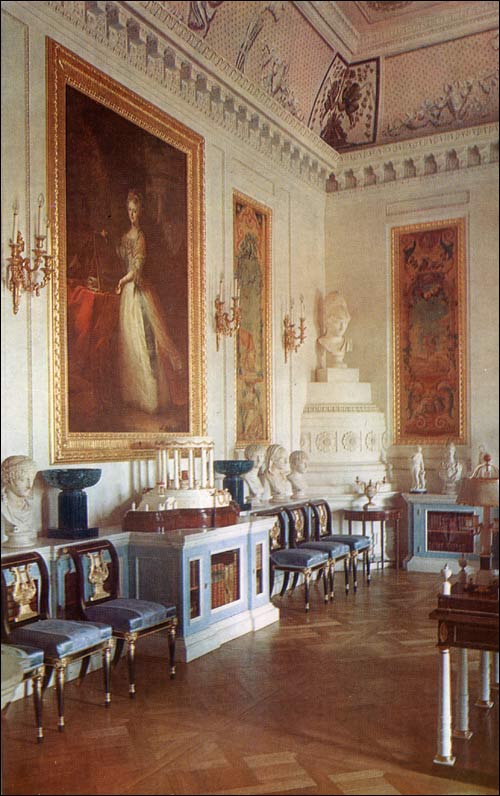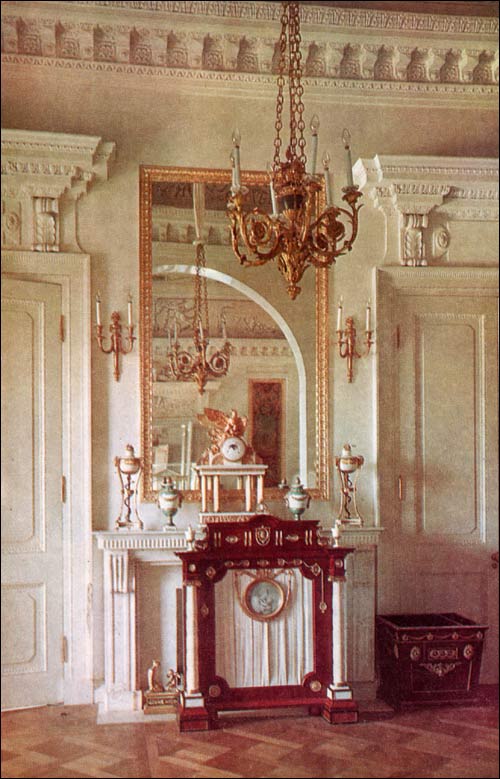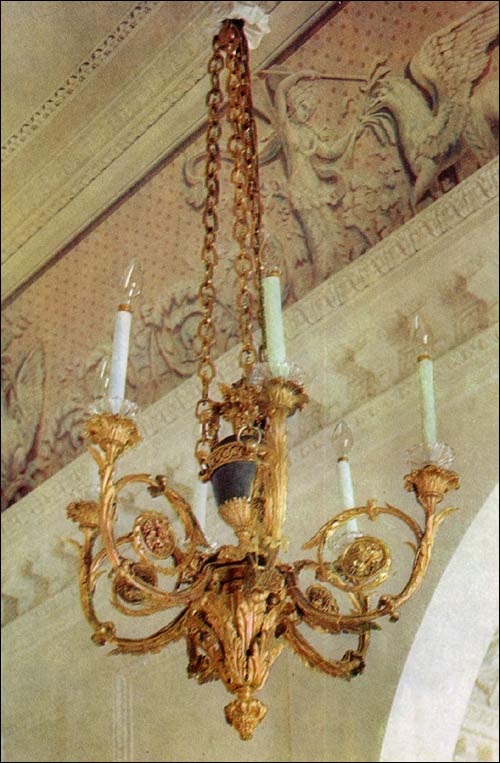Tips from me, Bob Atchison, on how to make your home builder website a success

|


The Library of Paul I and the Study, though divided by a wide semicircular arch, practically form a single apartment. The plan belonged to Brenna and was respected by Voronikhin. The walls are faced with white stucco. In the Library they are decorated with long and narrow Savonnerie carpets, illustrating subjects of the fables of Lafontaine, set against landscape backgrounds with a vast expanse of light blue sky, and surrounded by ornamental borders. The low book cabinets lining the walls were designed by Brenna as pedestals for the display of scul ptures belonging to the palace collection of antiquities, Roman portrait busts, decorative vases of porcelain and coloured stone, etc. In the centre of one of the walls hangs a large portrait of Maria Feodorovna, the wife of Paul I, done in 1794 by the Austrian painter Johann-Baptist Lampi. The refined colouring, meticulous attention to detail and subtle flattery are typical of the court art of the eighteenth century.
The marvellous vases, of jasper known as Ridder breccia, one of Russia's most beautiful coloured stones, were made in 1794 by Filipp Strizhkov at the Kolyvan Factory. The high standard of craftsmanship which characterized the work of Russian cabinet-makers is exemplified by the monumental writing tables in the Library of Paul I and the Tapestry Room. The one in the Library, made of mahogany and ornamented with fine chased ormolu decorations, inlays of milk glass, cameos, etc., rests on twelve ivory legs in the shape of slender columns. On the table are several decorative objects in the same style: an ivory and amber model of a classical building, "Temple of Vesta", with a statue of the Roman goddess of the hearth within, and a writing set in the antique style, with a pair of candelabra, also of ivory and amber. The tables and decorative objects belonging to them were made in St Petersburg from the designs of Brenna. He also designed the model of a round columned temple, standing in the Library, and the fireplace screen in the Study. The writing table in the Study, with a bronze vase clock and candlesticks at either end, is stamped P. Denizot. The long-case clock with ornamentation of masonic emblems, also in the Study, is by David Roentgen, with movement by Peter Kinzing. The elegant chandelier is the work of Pierre Gouthiere, one of the outstanding bronze workers of the eighteenth century.    |

|





